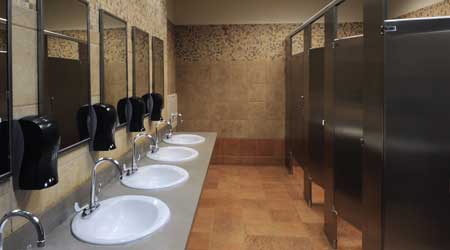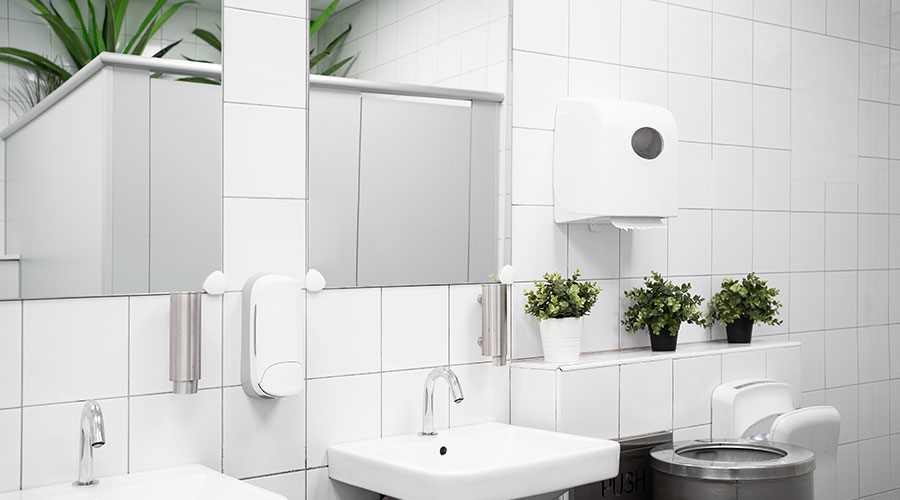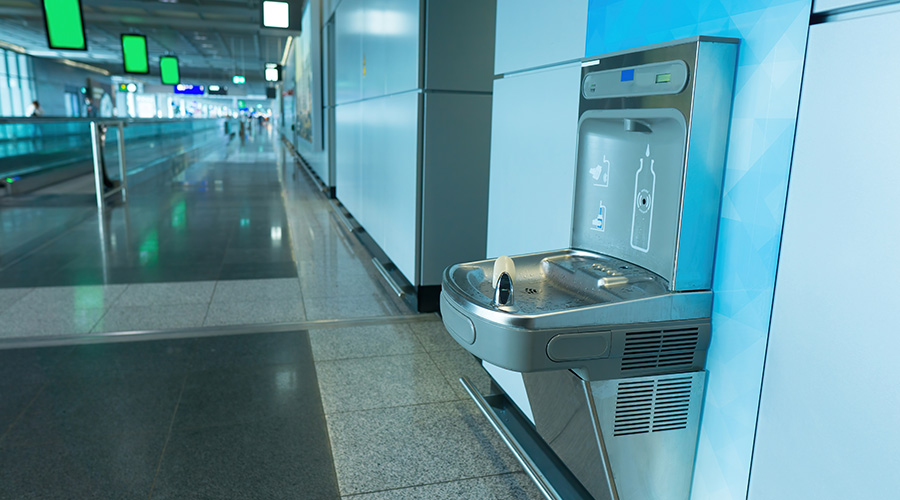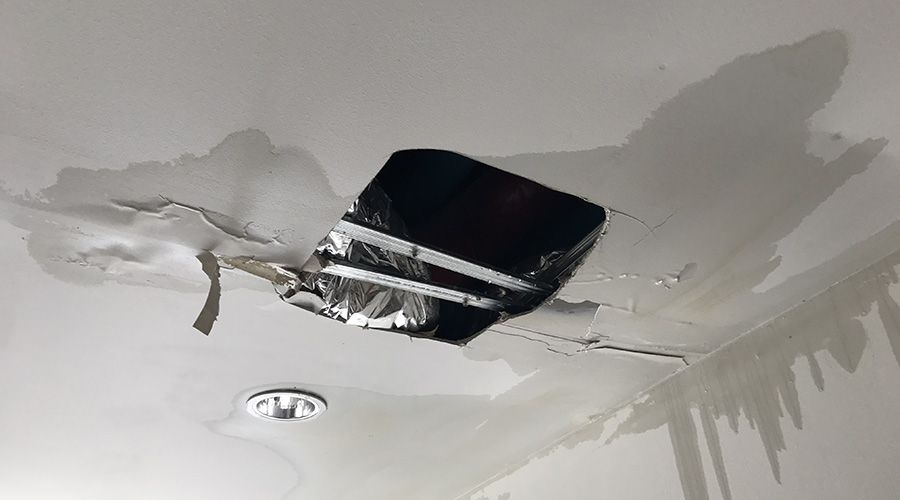 By discussing water use, traffic levels, lighting, and hygiene during planning, managers can help project designers develop effective upgrade plans.
By discussing water use, traffic levels, lighting, and hygiene during planning, managers can help project designers develop effective upgrade plans.4 Issues in Successful Plumbing Upgrades
Careful planning that includes setting clear goals helps managers produce successful restroom upgrades
Restroom renovations can help managers address a range of challenges related to their departments, facility operations and their organizations’ bottom lines. Among the most common issues managers should address during the planning phase are these:
Traffic levels. The level of demand placed on a particular restroom will influence everything in the design of the renovated space, from size and layout to the number and type of fixtures installed. Managers also should consider building code requirements a good starting point, but codes are a minimum requirement and might not meet the needs of a high-traffic area.
Managers should look at the use level of the existing restroom. Do users voice frequent complaints about long wait periods or overcrowding? Do people have to use another restroom that is further away just to avoid a wait?
One size does not fit all. The renovation design needs to match the capacity to the level of traffic flow and handle surges in use.
High-use restrooms also will affect the type of fixtures specified and installed and the finishes used because a standard fixture or finish might not be durable enough to withstand operations in a high-use restroom. Managers also need to consider the decisions related to high-use restrooms that might require more frequent cleaning.
Water use. Reducing water use remains a motivating factor behind many restroom renovation projects. Touchless controls that meter the use of water have proven themselves capable of reducing overall restroom water use by 50-70 percent. Although the controls are more expensive than conventional, manual controls, the difference in cost typically can be recovered in two-three years.
Touchless controls offer an additional advantage — reduced maintenance costs. Since users no longer have to activate the valves, damage to valves from normal use or abuse is less likely. And controls that no longer require touching require less frequent cleaning. Waterless urinals offer yet another way to reduce water use in restrooms.
Lighting. Most restrooms are unoccupied 75-90 percent of the time. Unfortunately, most restroom lighting controls consist of the conventional manual light switch, which rarely is turned off. As a result, the lighting system operates 24 hours per day, seven days per week.
Replacing the manual light switch with automated controls can reduce lighting energy use by up 90 percent, even when the system includes one small fixture that can remain on 24/7 in order to prevent having the lights switch off when the restroom was in use.
The lighting system design also should ensure light falls where users need it. Conventional practice has been to provide uniform lighting levels throughout a restroom, but this approach results in lighting energy use of about 2 Watts per square foot. Placing fixtures to provide light only where users need it at the levels required can reduce that figure by 50 percent.
Standardization. One of the most important planning components in restroom renovation projects is the development of standards — the types of soap and paper towel dispensers to use, the type of flush valves to install, the type of faucets to specify, etc. Standardization reduces the number of items maintenance departments must stock, allowing further savings through the use of bulk orders. Custodial and maintenance workers will not have to learn to work with a new component in every different restroom in a facility, and should a fixture or other component wear out, stocked replacement units would be available, limiting downtime.
Looking back, getting ahead
One of the most important steps in the planning process takes place after the renovation has been completed. Managers must evaluate the success of the process by asking for feedback from custodial and maintenance personnel.
What works, and what could be done better? Did the specified components perform as expected? Could any renovation delays have been avoided by changing the process? If errors occurred, evaluating the project and the process can avoid their recurrence in future renovation projects.
James Piper, P.E., is a national consultant based in Bowie, Md. He has more than 35 years of experience with facilities maintenance, engineering and management issues.
Related Topics:













